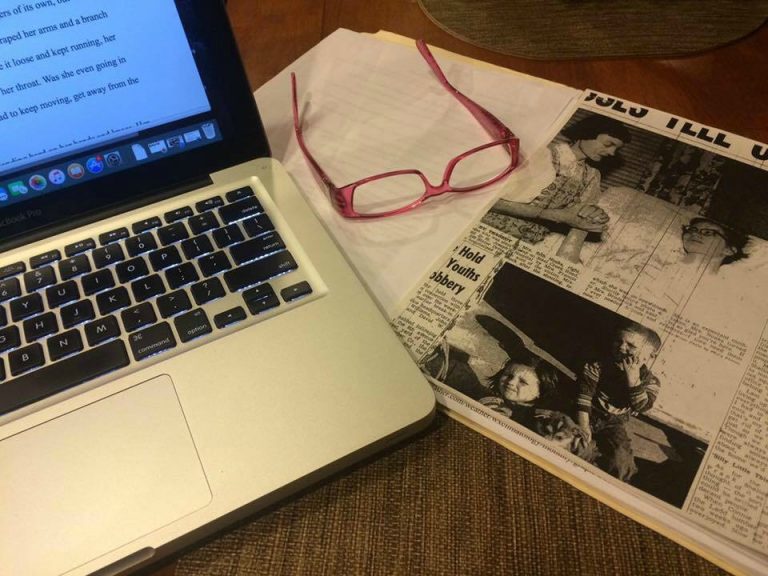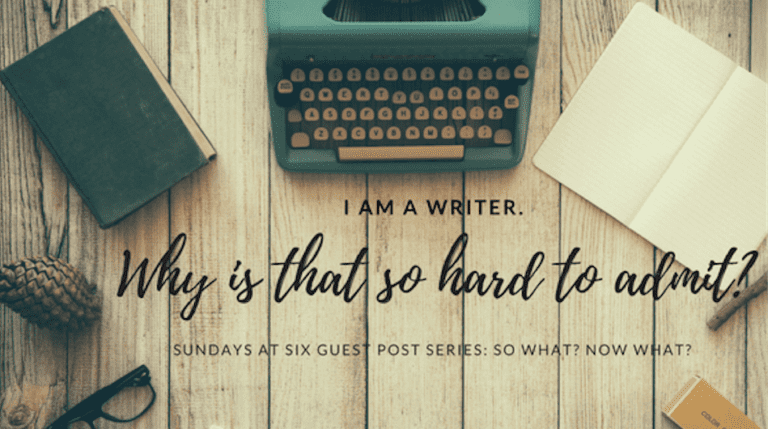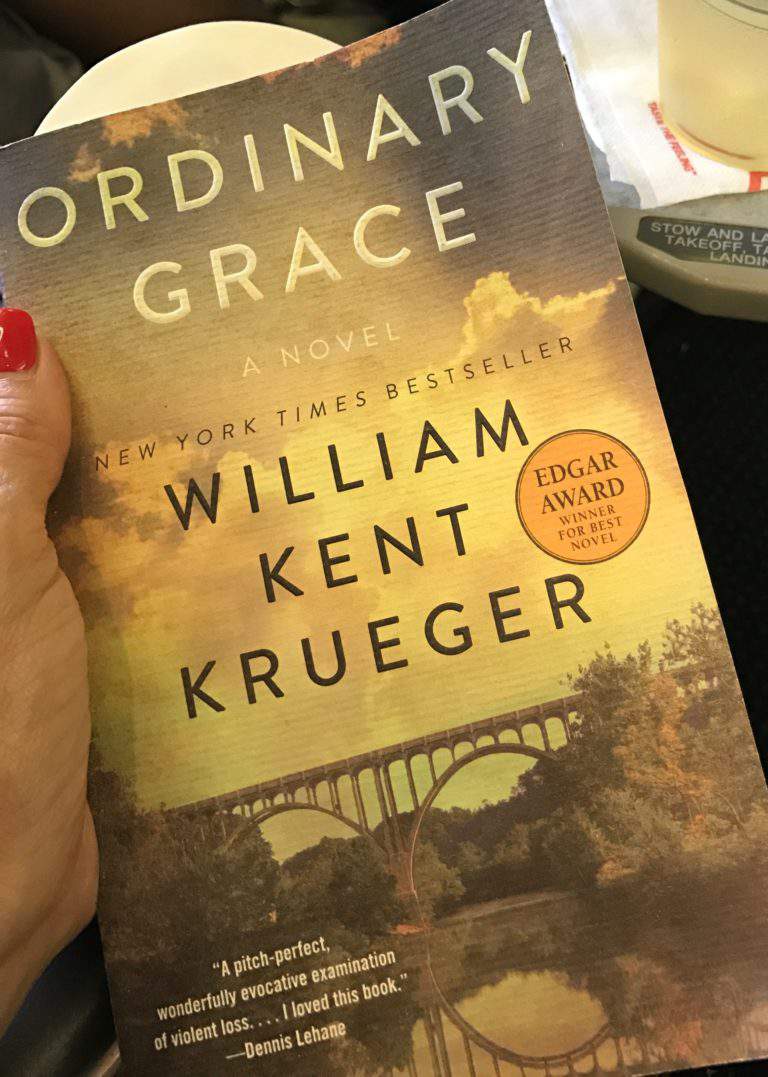How to write vivid descriptions: the condensed version
I am a woman of few words. That might be a strange way for a writer to describe herself. I mean I’ve been publishing a weekly blog for more than three years now, and I’ve worked as a communication professional for 30.
However, as you may have noticed, I usually get straight to the point. I don’t include a lot of extra narrative or detailed description in my writing or my speaking. Most of the time I’m content with that, but there are times when that brevity can create challenges.
Can you be too succinct? When less isn’t more.
I remember in elementary school being assigned to write an autobiography. We were given a minimum page count. I don’t remember all these years later what the count was, only that after my first pass, I had summed up the important milestones of my life in a couple of paragraphs—not anywhere near enough.
That was in the olden days, before home computers, so I didn’t have the option of increasing font size and margin width to fill the page. My mother explained that it wasn’t enough to list the facts. I needed to tell a story with descriptions and examples. Somehow, with her help, I was able to fill the required number of pages, and as I recall, got an acceptable grade on that assignment.
Flash forward 50 years, and I’m writing a novel. You heard me right, the woman of few words has written a novel with more than 100,000 of them. When I started this quest, I expected to struggle with dialogue. After all, because I’d never written fiction, dialogue had not played a big role in any of my previous projects. As it turns out, while I may not talk a lot, I am a good listener, which happens to be a useful skill when it comes to writing dialogue.
What I was not prepared for was how difficult I found it to write descriptions that weren’t trite or repetitive. The temptation for me was to write the action, the dialogue, and the protagonist’s inner thoughts with little to no description of the scene. The danger with that, as writer Anne Marble points out, is “you can wind up with stories where people wander vague hallways or buildings, and readers don’t get a sense of time or place from your story.” Since my novel is set in 1950s Fairbanks, setting is kind of a big deal.
How do you write vivid descriptions?
I found some help in The Art of Description: Eight Tips to Help You Bring Your Settings to Life. Here are all eight tips mashed together in one paragraph (again, a woman of few words). If you are interested in improving your description-writing skills, I highly recommend reading the entire article. Sometimes more really is more.
Avoid huge lumps of description that stall the story line. Instead make description an active part of the story, describing what your characters would notice with all of their senses, using strong words and concrete details. Along those lines, make the description fit the story type. James Bond isn’t going to stop and notice the beauty of the Alps as he escapes the gun-toting spies. Go ahead and use brand names as part of your description, but don’t overdo it and make sure you use the trademark correctly. And finally, don’t let description hang you up during a first draft. If you struggle with description like I do, don’t let it stop you from getting your story on paper. You can always go back and add description in a future draft.
Your turn
- Are your first drafts burdened by too many or too few descriptive details? Or are you like Goldilocks, finding the “just-right” description?
- Do you have any tips for those of us who struggle with description?
- What, if anything, do you still write out longhand on an actual piece of paper?
- What else is on your mind today? Share anything at all.
Follow my blog with Bloglovin.
Shared on the GRAND Social, #MLSTL, and the Blogger’s Pit Stop.
Feature image by Steve Johnson from Pixabay









I’m also struggling with description in a memoir I’m writing. I’m taken with the point: make your description part of the action/story. so, not description for description sake. very helpful.
Good luck on your memoir. Writing description is tricky, but I did find it helped to work it into the action of the story.
While you are a woman of few, and well-selected words, I am a rambler. A minimum word count is never an issue over here. But getting to the point certainly is.
Have opened the resource you provided on description in another tab. Will have a look and likely pin it and this post for future reference. I just left off working on my children’s book to read blog posts this morning. Glad I started with yours.
Thank you for those kind words Leslie. Good luck with your children’s book. I hope I get a chance to read it one day soon.
Hi, Christie – I’m like you in terms of using a “less is more writing style”. I love the tips that you have included here – they make much sense to me.Thank you for sharing them!
Yet another thing we have in common Donna. I feel like we are related somehow. 🙂
Christie, your post is the second one referring to writing with less “fill-in” words. I am trying to include less, not always successful! Thanks for the reminder to keep doing so. Wow, a book, have fun achieving that goal.
It’s a balance get just the right amount–and the right words. I guess that’s the real trick. Thanks for the well wishes. It’s been an adventure.
Intriguing Christie. I will pull up the link and save for future reference. Two of the reasons I’ve been afraid of writing non-fiction is dialogue and description! There are other fears as well, but those are two big ones. While I am actually verbose and not pithy (I tend to like to give lots of background and examples), I’ve also always written fiction. I like the idea of getting the story out and adding in details later. But still think it will be a challenge for me!
Writing a book has been a challenge for me as well, Pat, but I am glad I decided to do it. I’ve definitely stretched myself way out of my comfort zone and learned a lot in the process. I had the vague idea of a book in my head for years. When I finally got serious about writing it, I wrote a synopsis of the story and shared it with a few people. When they seemed interested, I wrote a single scene. I quickly learned I needed help, so I connected with a writing coach, who was also a published author. She was a great help getting me started and then helping me build momentum through the long first draft process. Now a couple of years later, here I am in the homestretch. Do you have a specific non-fiction idea in mind for your book?
I’m not what you would consider a “writer”, but I do write with pen and paper in a journal. (Although not nearly as often as I should.) I recently found an old journal from the time when my children were little. I’ve been sharing stories with them and it’s been so fun!
For me, the computer is my go-to writing tool, but there is something satisfying about writing in longhand. I keep my to-do list and other notes in a notebook I carry around. I also write in a “line-a-day” journal each evening. I love that you have those stories to share with your children now that they are grown with children of their own!
My background is in communications also and my writing goals have always been to be clear and succinct. I don’t think I have a novel in me, which is probably a good thing… maybe a short story 🙂 I’m looking forward to reading your 100,000 words!
I don’t think I would have ever written a novel if my mother hadn’t provided me with a story I felt needed to be shared. I thank her and curse her daily! 🙂
Hi Christie I so admire people who actually write a book. I’ve been tossing the idea around for a couple of years but haven’t done anything with it. I often wonder about my writing as I tend to waffle sometimes. I’m looking forward to reading your book and would love to feature you on the blog when you have finished. Thanks for sharing your writing tips with us at #MLSTL and have a beautiful week. xx
Thank you Sue. I thought about this book for years before I actually wrote a single word. Now that I’m this far into it, I sometimes question my sanity, but I never regret that I started. You may yet write that book. I’ve read and edited for a living–not books–but lots of other pieces. If you ever need an opinion on something, I’m happy to help. Based on what I read in your blog, your writing skills are strong. Thanks for the invite for a feature when the book in finished. I’ll definitely take you up on that. And thank you, Sue, for your continued support and encouragement!
When I read things like this I’m almost relieved that I don’t have a novel inside my head Christie. There’s so much you take for granted as a reader and don’t realize the background construction that goes into making a novel flow. I always think about authors of fantasy and sci-fi novels who have to create entire worlds and make them believable – my admiration knows no bounds!
Thanks for linking up with us at MLSTL and I’ve shared on my SM 🙂
It is pretty amazing what goes into a novel when you start to break it down. I’m reading a light-hearted book that’s part of a private investigator series. I often read a book from this series after a heavier read or when traveling and I want something enjoyable, but not too serious. Anyway, as I was reading this time, I realized what I like about this author is her ability to paint a picture of everyday life with her words and create characters who are flawed and human, but who I really like and root can root for. It’s a skill I’m working on, but have not yet mastered.
Christie, I also struggle with descriptions. Plus I use just and because too much. I would love to be a writer but words do not flow from my keyboard as smoothly as I would like.
I can relate Victoria. As I am editing my work, I realize there is a lot of heart pounding and palms sweating. I’ve had to dig deeper to think about other ways our bodies react when we are anxious or excited. Writing a novel can be daunting. One of the things I love about blogging is the small, concise nature of each post. It’s more my natural style.
My biggest issue in writing my novel (and my business book) has been self-editing too much along the way. Sounds like you are getting your writing out — now just head back and clean up the pounding hearts and sweaty palms. Gotta love a good thesaurus.
I feel your pain Janet. I try to separate the writing work from the editing work, or I’ll never get past the first paragraph, but it’s a constant challenge. The editor in me has a hard time taking a back seat.
Love this. Sometimes I find I’m too succinct in my speech – lol. I think I’m just getting to the point when really I could probably use a few more words 🙂
Funny thing–no one feels like they have it figured out. Everyone has responded either too verbose or too succinct. I guess we’re all in this struggle together!
I know one thing, I CAN NOT stay focused on a long, drawn out blog post!!! Some people just go on and on when they could have said it in fewer words. But yes, my book draft is most definitely burdened by too few descriptive details. So no, I can’t offer any tips for those who struggle with descriptions. I write nothing out in longhand on an actual piece of paper. Everything is digital…even my grocery shopping list!! Oh, I also know another thing…I CAN NOT wait to read your book, of course you already knew that, huh? Shared x 3 ♥
It’s a fine balance, isn’t it, between too many and too few descriptive words? At least, we’re all struggling together! Good luck on adding some description to your book. Thanks for the encouragement on my book. I finished the next round of writing and am back in edit mode. I write most things digitally, but I keep my to-do list on paper. I like the satisfaction of literally checking things off the list.
As a speaker, I use few words. As a writer, I can tend to ramble. I think it depends on the topic but with my blog, I will let the words flow and then go back and edit like crazy. I’ve always wanted to write a novel but I have no story in mind. I know I would struggle with description. I still use a planner which includes multiple types of lists. I like the portability and writing things on paper.
I was interested in your desire to write a novel but not having the story idea yet. I was just the opposite. I had the story, but wasn’t sure I wanted to write a novel. 🙂 I like the paper to-do list as well. I enjoy the satisfaction that comes from checking things off.
Thank you for linking up and co-hosting with me at the #BloggingGrandmothersLinkParty 38! Shared x 3.
You’re welcome, Dee. Thanks for keeping the party going.
Hi Christie, I’m not a writer (although you never know!) but I am learning to write more descriptively when creating my blog posts. It is definitely a challenge and a skill that I’m working on with every new post.
I would say if you blog, you are a writer, Candi. But I do understand what you are saying. It’s a new skill, maybe one you hadn’t developed before now? Either way, keep on writing and I’ll keep on reading it! See you over at Inspire my Style.